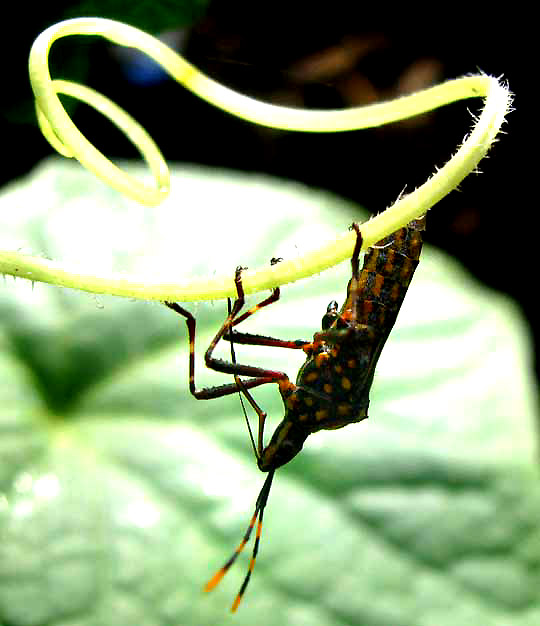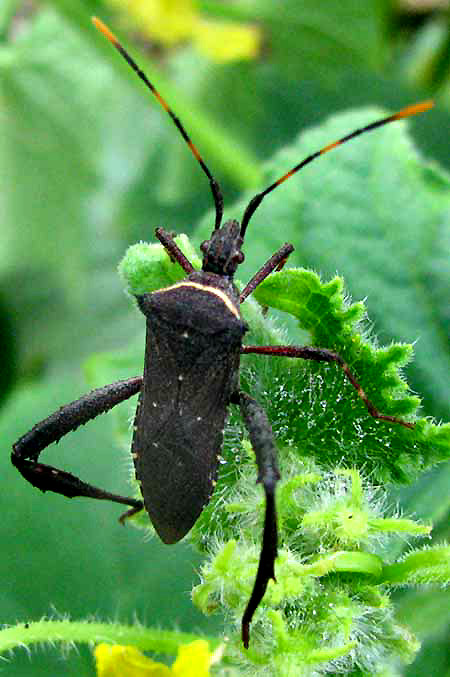Excerpts from Jim Conrad's
Naturalist Newsletter
from the June 27, 2010 Newsletter issued from Hacienda Chichen Resort beside Chichén Itzá Ruins, central Yucatán, MÉXICO; limestone bedrock, elevation ~39m (~128ft), ~N20.676°, ~W88.569°
CITRON BUGS
First little green caterpillars began eating my cucumbers' flowers and leaves while they were still in the budding stage or just beginning to open, then as soon as we figured out how to control them a kind of leaf-footed bug appeared, inserting its juice-sucking proboscis into all parts of the plant. You can see one with its needlelike proboscis stuck into a tendril below:

A view of the bug's much less colorful top is shown below:

Bea in Ontario told me that this looks like a Citron Bug, LEPTOGLOSSUS GONAGRA, a member of the Leaf-footed Bug Family, the Coreidae, of the True Bug Order, the Hemiptera, which embraces true bugs. By "true bug" is meant members of the Hemiptera, recognized by their sucking, strawlike beaks, and front wings leathery and often colored at their bases but transparent at their tips. Lots of insects not in the order are referred to as bugs, so they're not "true bugs."
Insects that suck a plant's internal juices through a strawlike beak aren't affected by organic materials dusted onto the plant meant to attack the insect's intestinal system. Therefore, true bugs can be hard to control. On my cucumbers, a few days after the first Citron Bugs appeared, dozens more were appearing and my little cucumbers were yellowing, shriveling and falling off.
My friend José heard about an organic concoction consisting of two or three cups of Rue leaves (Ruta graveolens) and a whole head of garlic with several cloves, all mushed together in a liquefier, then strained, and the resulting green, garlicky juice sprayed onto the plants. So far the solution seems to work fairly well. Our problem is not having enough Rue. I'll be planting a lot later on.
My friend Margarita back in Querétaro writes that one way to fight them is to make sure the plants are healthy, especially by providing them with appropriate "biofertilizer," which here means horse manure. The immune system of healthy plants deal with insects like Citron Bugs better than those of sickly plants.
Margarita also concocts a very strong tea made with stale onions and chamomile she rescues from the local market.
Citron Bugs seem to be a problem to gardeners throughout the American tropics and even in Florida where they attack citrus and a variety of other plants. Their preferred hosts here seem to be members of the Cucumber or Squash Family -- like our cucumber vines.